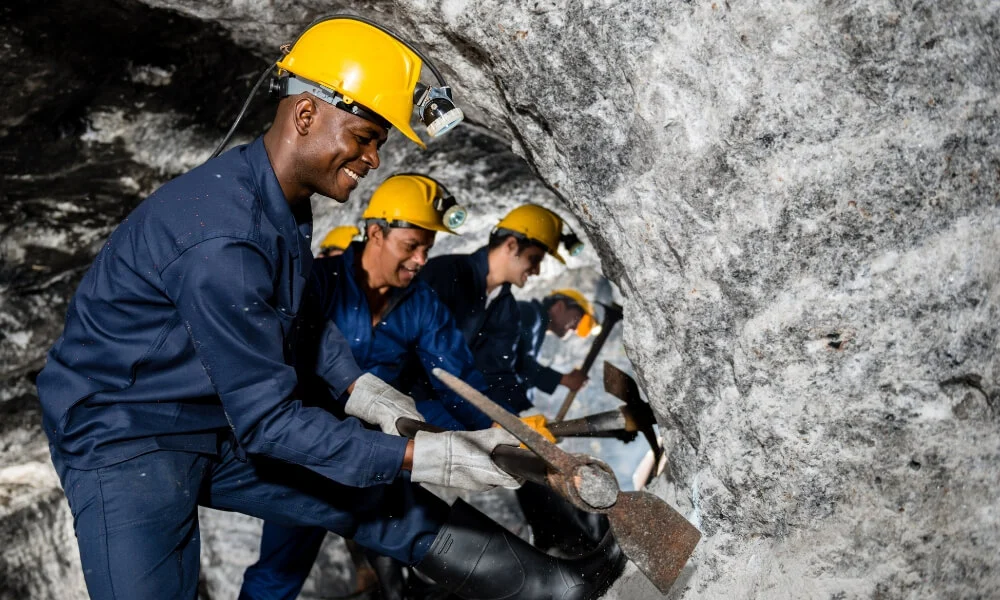Mine safety is a critical aspect of the mining industry, encompassing the practices and regulations that protect the health and well-being of workers and minimize environmental impacts. Given the inherently hazardous nature of mining operations, establishing and maintaining high safety standards is paramount. This article discusses the importance of mine safety, common hazards, safety measures, and emerging technologies that enhance worker protection.
The Importance of Mine Safety
The mining industry is vital for providing essential resources, but it also poses significant risks. Accidents and injuries can result in loss of life, long-term health issues, and substantial financial costs for both workers and companies. Additionally, ensuring safe mining practices is crucial for maintaining public trust and compliance with regulatory standards. By prioritizing safety, mining companies can improve worker morale, reduce absenteeism, and enhance productivity.
Common Hazards in Mining
- Geological Hazards:
- Unstable rock formations can lead to cave-ins or rockfalls, posing serious risks to miners. Understanding geological conditions is crucial for safe mine design and operations.
- Respiratory Hazards:
- Dust and airborne particles, such as silica and coal dust, can lead to respiratory illnesses, including pneumoconiosis (black lung disease) and silicosis. Effective dust control measures are essential to protect workers.
- Chemical Exposure:
- Miners may be exposed to hazardous chemicals used in extraction and processing, such as cyanide and sulfuric acid. Proper handling, storage, and disposal procedures are vital to minimize risks.
- Equipment Accidents:
- Heavy machinery and equipment are integral to mining operations, but they can pose risks if not operated safely. Accidents involving trucks, loaders, and drills can result in severe injuries or fatalities.
- Electric Shock and Fire Hazards:
- Electrical systems in mines can present risks, including electric shock and fire. Ensuring that equipment is properly maintained and following safety protocols is crucial to preventing incidents.
- Thermal Hazards:
- Miners can be exposed to extreme temperatures, whether from hot environments or cold exposure. Ensuring proper clothing and hydration is essential for worker safety.
Safety Measures in Mining
- Regulatory Compliance:
- Mining companies must comply with local and national regulations governing mine safety. This includes adhering to safety standards set by organizations such as the Mine Safety and Health Administration (MSHA) in the United States.
- Training and Education:
- Ongoing training programs for workers are essential to educate them about safety procedures, hazard recognition, and emergency response. Regular drills can help ensure preparedness for potential incidents.
- Personal Protective Equipment (PPE):
- Providing appropriate PPE, such as helmets, gloves, respiratory protection, and high-visibility clothing, is crucial for protecting workers from various hazards.
- Regular Inspections and Maintenance:
- Conducting regular inspections of equipment and mining sites helps identify potential hazards before they lead to accidents. Maintenance programs should be in place to ensure that machinery is safe to operate.
- Emergency Response Plans:
- Developing and implementing emergency response plans is essential for addressing potential accidents. These plans should be communicated to all workers and practiced through drills.
- Safety Culture:
- Fostering a culture of safety within the organization encourages workers to prioritize safety and speak up about hazards. Leadership commitment to safety can drive improvements in practices and attitudes.
Emerging Technologies in Mine Safety
Advancements in technology are transforming mine safety practices. Some notable innovations include:
- Remote Monitoring and Automation:
- Automated machinery and remote monitoring systems can reduce the need for human presence in hazardous areas, minimizing risks associated with equipment operation.
- Drones and UAVs:
- Drones can be used for site inspections, mapping, and monitoring geological conditions without putting workers at risk. They can quickly assess areas that may be difficult or dangerous to access.
- Wearable Technology:
- Wearable devices equipped with sensors can monitor workers’ health and environmental conditions in real time, providing alerts for hazardous situations such as excessive heat or gas exposure.
- Data Analytics and AI:
- Utilizing data analytics and artificial intelligence can improve risk assessment and decision-making in mine operations. Predictive analytics can help identify potential hazards before they become critical.
- Virtual Reality (VR) Training:
- VR training simulations allow workers to experience hazardous scenarios in a safe environment, enhancing their preparedness for real-life situations.
Conclusion
Mine safety is an essential aspect of the mining industry that impacts workers, communities, and the environment. By recognizing common hazards and implementing comprehensive safety measures, mining companies can significantly reduce risks and ensure a safe working environment. The integration of emerging technologies further enhances safety practices and promotes a culture of continuous improvement. Ultimately, prioritizing mine safety not only protects workers but also supports sustainable mining practices that contribute to the responsible management of natural resources. A commitment to safety is not just a regulatory obligation; it is a moral imperative that safeguards the lives of those who work in one of the world’s most challenging industries.
